Walking through the Italian town of Torre Annunziata, one would never suspect that some of the most luxurious villas of the Roman Empire lie buried some 25 feet beneath its streets. The only indication that earlier structures existed comes from a notation on the Tabula Peutingeriana, a twelfth-century copy of an ancient map of the Roman road system. Just three miles west of Pompeii, the mapmaker indicated a cluster of villas, next to which he wrote the word, “Oplontis.”
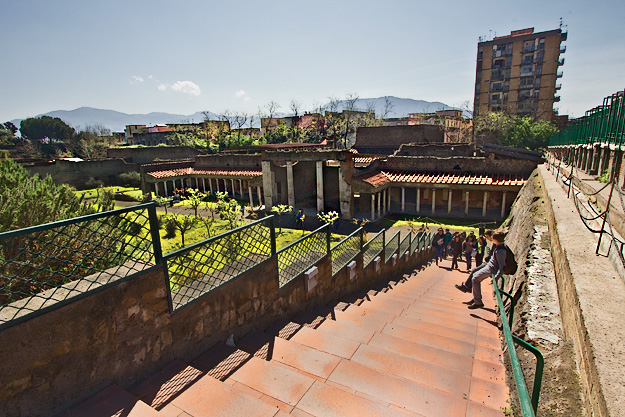
This small seaside suburb of Pompeii might have remained buried for all time had not a grain mill and arms factory required more water than the present-day town could supply. In the early 1590’s, work was begun on the Conte di Sarno canal, which would carry water to Torre Annunziata from the foothills of Mount Vesuvius. During construction, the ancient villa was discovered but no excavations were pursued until 1734, when Charles III of Spain conquered the kingdoms of Naples and Sicily. The King of the Two Sicilies, or Charles of Bourbon, as he was referred to by local people, was an enlightened monarch who instituted reforms that strengthened the economy and civic structure. He avoided wars, facilitated trade, modernized agriculture, and promoted science and the arts, thus upon learning about the ancient cities of Herculaneum, Pompeii, and Oplontis, he ordered that tunnels be dug to determine the extent of the ruins and search for objets d’art. Much of the statuary he unearthed landed in the gardens of royal palaces or was sold to members of the aristocracy, but to his credit, Charles shipped many of the most important pieces to the Naples National Archaeological Museum, where they are displayed to this day.
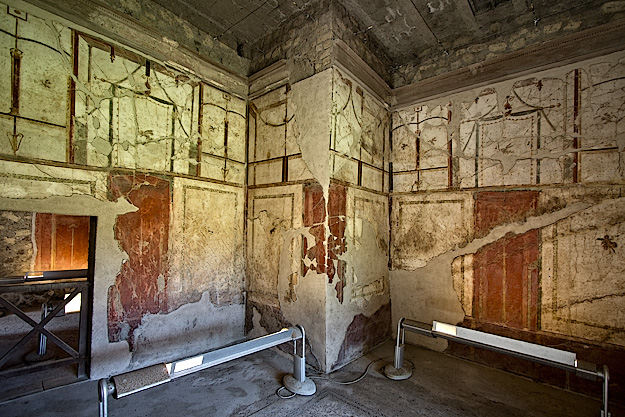
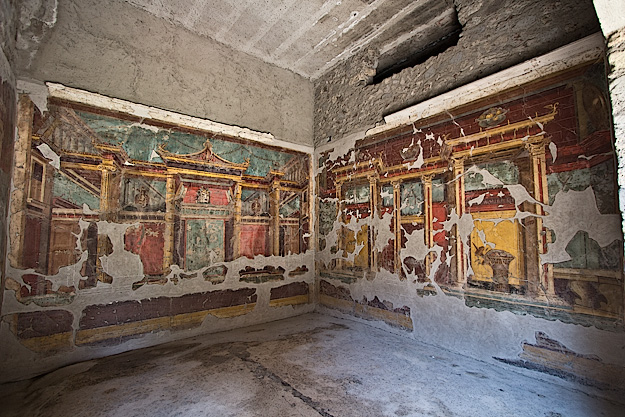
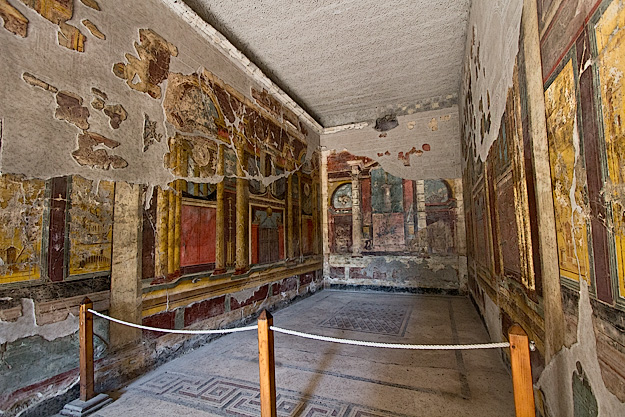

Open-air excavations finally commenced in Oplontis/Torre Annunziata in 1839, but a year later work was suspended due to lack of money. It wasn’t until 1964 that the Italian Ministry of Culture began a systematic excavation that uncovered the bulk of the estate. Today we know that the luxurious seaside villa was built in stages, with the original construction in 50 B.C. consisting of the atrium and surrounding rooms. It was substantially renovated at the turn of the century and at least two major modifications and/or additions were made to the property after A.D. 45, including the addition of a kitchen and, rare for the day, a communal latrine where water ran continually through trenches, carrying away waste.


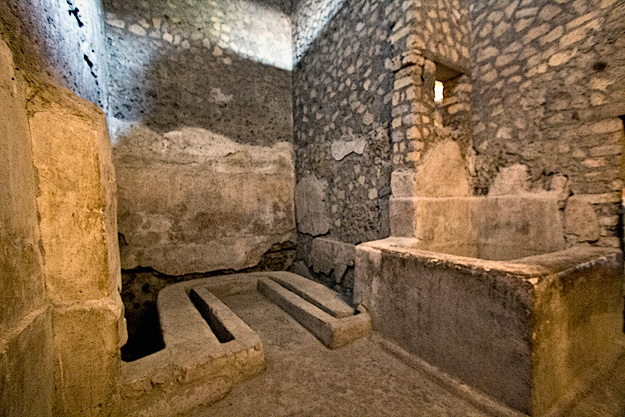
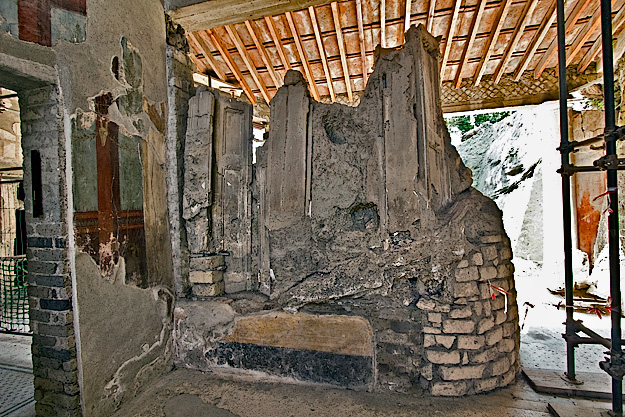
Evidence strongly suggests that the villa was owned by the Imperial Emperor Nero, but that it was largely used by his notorious second wife, Poppaea. Historians disagree about Poppaea; some insist she was a devout Jewish woman, while for others she was a manipulative, scheming woman who married a friend of Nero in order to get close to him. According to the latter camp, Poppaea seduced Nero and divorced her husband, then convinced him to murder his mother and first wife, leaving her free to step into the role of Empress.
Poppaea filled her villa on the sea with statuary and employed the best artisans to cover the walls with exquisite frescoes and create elaborate mosaic floors. One whole wing housed servants, who would have tended to the needs of guests during lavish parties (some say orgies) that were held around a large swimming pool. For me, the most impressive room was the Oecus, a Roman living room. Prior to the eruption it would have had stunning views toward the Bay of Naples, as geological coring has now proven that the villa perched on a cliff, some 65 feet above the sea. The walls that faced away from the sea were covered in tromp l’oeil frescoes, including a floor-to-ceiling scene of a sacrificial tripod on pedestal column, sitting in a sanctuary dedicated to Apollo and family ancestors.
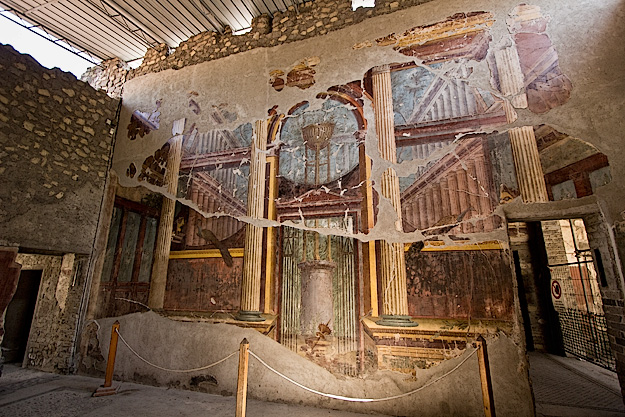
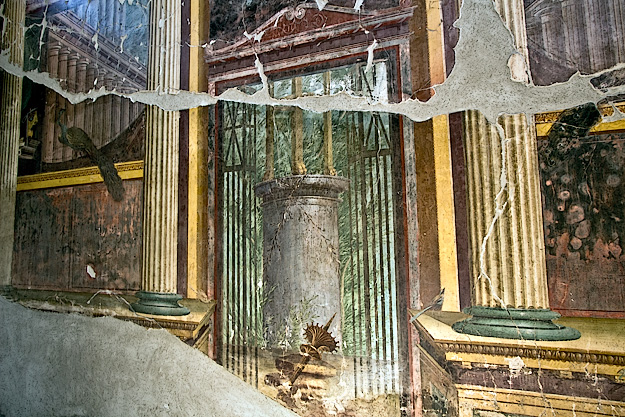
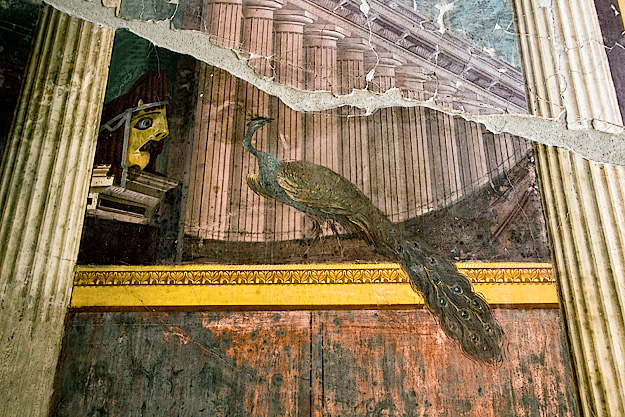
As in Herculaneum, wave after wave of pyroclastic mud and volcanic ash flowed into Oplontis soon after Mount Vesuvius erupted in A.D. 79, instantly burying the villa. Unlike Herculaneum and Pompeii, however, no bodies were ever found at what had become known as Villa di Poppaea Sabina. Seventeen years earlier, an earthquake had caused extensive damage to its water systems. The villa that had been filled with the sounds of burbling fountains and guests splashing in the pool grew silent as it awaited its unimaginable fate.
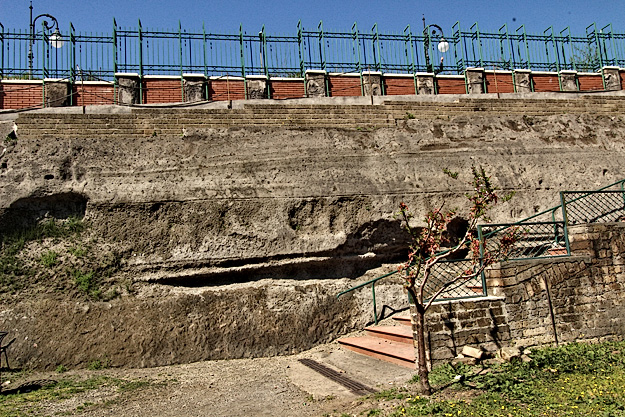
Poppaea died in A.D. 65, thus she escaped the eruption of Vesuvius. However, her fate was no less horrific. According to the Roman historian Suetonius, Nero became enraged at Poppaea during an argument and kicked her in the stomach, killing both her and her unborn baby.
How to Visit Villa di Poppaea:
Take the Circumvesuviana Train from Naples or Sorrento to Torre Annunziata. Upon exiting the station, turn left and walk half a block to the next street, then turn right. The site is about two blocks further, on the left side of the street. You can purchase a ticket for 5.50 Euro ($7.50 USD) that allows visits to Oplontis, Stabia, and Antiquarium of Boscoreale, however if you plan to visit Pompeii and Herculaneum, the 20 Euro ($27.25 USD) global ticket that provides access to all five sites over three days is a much better value (one entry per site). Tickets are available at any of the ruin sites, though be advised that lines at Pompeii may be long during high season.

G’day,
I’m going to make it a priority to revisit Oplontis when I have free time in the area in July . I remember the directions for Herculanium from the early 70’s and came across Oplontis by chance . Then it was closed to the public but an old man insisted I took a turn round the site . Both communicating in our own language , there was no need for a translator ! I have some photos taken at the time and in one I tut-tutted about how untidy those foreigner’s were on seeing an old metal bath up against a back wall . It was very much later that I realised that bath , presumably lead may well have contained Mrs Nero herself and maybe a quantity of asses milk as well .
Can’t wait for July .<<<<MDT
You’ll love it Martin. And if you didn’t visit the Naples Archeological Museum the last time you were in the area, it’s worth half a day. You may know that almost all the actual artifacts from Pompeii were moved there, and what remains at the site are reproductions. There are more originals left at Herculaneum, which is one of the reasons I enjoyed it more than Pompeii.
Poppaea died in 65 Ad, so 14 years before Mount Vesuvius erupted… So she never witnessed this cataclysm nor she could be one of the survivors…
For the rest very nice blog and a good guide for visiting!
Hi Paul: My article did not say that Poppaea died in the eruption of Vesuvius, however in rereading I realized that someone could draw that conclusion, so I added a few words to the final paragraph to say that she died in A.D. 65. Thanks for your comment – always appreciate hearing about things that could make my writing better.
Thank you for your keen insight into history, superb description, and inspiring writing!
I will be returning to Southern Italy for the second time in two years, and cannot wait to get lost in Pompeii’s ruins once again!
Hi Linda: There is so much to see in that area of Italy and, unfortunately, most people just focus on Pompeii. Hope my articles help you to delve more deeply!
I watched the film called Pompeii, the other day and was that impressed so researched further. The maker of the film said most of the information in it, was historical correct. I really want to see it now and the artifacts in the Naples museum
Hi Natalie: Hope you get to Pompeii to see it in person, and to the Naples Museum, as that is where most of the original artifacts are housed these days.
Thank you for sharing your wonderful photos of Villa di Poppaea! I’ve heard of Villa di Oplontis in passing, but never realized it was something we could actually visit. I will definitely add it to my must-see list next time I’m in the area. Thanks!
Hi Charity: You’re very welcome. And when you go, if you’re lucky, there will be a second site available to visit, just a block away, which is currently being excavated.
I’ll have to go back and visit this site, had such a limited time in the area so will return.
Hi Noel: I had no idea just how many sites there were to visit and even though I was in the area for nearly two weeks, I still didn’t see everything.
Superb blog!! A great ancient times photographs in the blog are really informative. Thanks for sharing such an amazing information. We provide information on travel places from Pune, be it beaches, hill stations.
Thanks,
Shivani
WOW! Thank you for the details of the amazing frescoes…most only share more full views. And your writings are fantastic, offering little known stories of the people involved in the historic scenes…I was able to visualize the settings in all of their glory and horror!
Ashley, you’re words are a high compliment for any writer. If I can “take you along” with me via my words, then I’m doing my job well. Thanks so much for your comment.